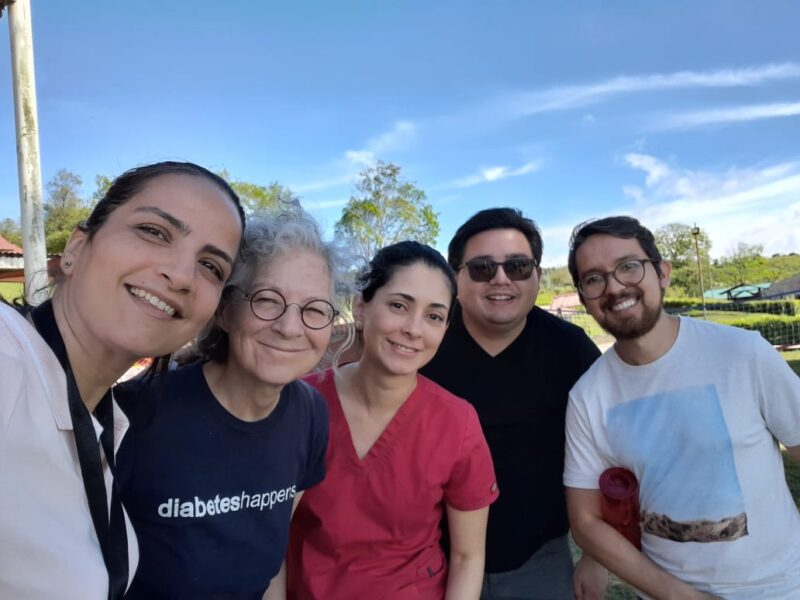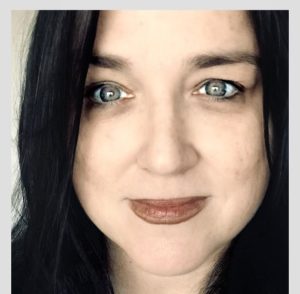A new model for diabetes camp in Costa Rica – emotions take center stage.

Above me and four of the six or seven doctors who worked at camp
The husband and I just returned from 12 days in Costa Rica. The first days were spent at our friend Daniela Rojas’ diabetes camp outside of San Jose. Daniela has run the camp for 12 years and many of the kids come back year after year. They love the camp.
Over the past few years Daniela has accentuated helping kids deal with the emotions of living with type 1 diabetes amid playing games, athletic activities and management education. She began this well-being focus four years ago using my first book, “The ABCs of Loving Yourself With Diabetes.” We actually produced a Spanish version of the book when we published it.
The kids in like-aged groups would chose one of the inspirational essays in the book to read and then discuss the feelings that it brought up for them. For example fear for their future; would anyone love them and marry them; guilt over being a burden to their parents. To my knowledge no other diabetes camp puts such emphasis on the well-being and mental health of campers, nor gives them such creative ways to share. Here’s a short video that was shot at camp that features me and the husband.
We’ve been invited these past four years to camp, but each year something got in the way. Thankfully, this year nothing did. As part of my contribution I shared my story of living almost 52 years with T1D. A hush fell over the 60 campers when I talked about a previous boyfriend who was completely oblivious to my need to treat a low blood sugar. He went back to bed while I searched in his darkened flat in London, where I had just that day, for sugar. A few tween girls dissolved into tears at various times during my talk, as their feelings of shame and fear arose. The husband and I talked with them afterward and the next day they were all smiles again.
The husband led the campers, group leaders, and doctors, in calming somatic exercises for the nervous system. In truth, living with T1D we are always in a state of hypervigilance watching our blood sugar rise and fall, on the lookout for a crash and making dozens of management decisions a day. It was remarkable to see nine year olds embrace the exercises; in essence embracing themselves. And together we spoke to 20 parents of newly diagnosed kids and helped them see that their kids do indeed have a future. Some of the parents had driven nine hours from Nicaragua as this was the closest diabetes camp.



Amid all the activities, watching the kids throw themselves into playing Master Chef, above, as the sun was setting outside the camp house was beyond delightful. And I appreciate Abbott that supplied Freestyle Libre sensors to all the kids. Their first experience of wearing a CGM. Of course one only lasts them 14 day but still…
Needless to say camp, only 2.5 days, was a rich, rewarding experience. I had never attended a diabetes camp with kids before. If you’re wondering, what the husband and I did was translated into English. Being around the campers required no translation. I fear it has to do with litigation, but camps in the US could certainly benefit from creating a safe space for kids to bond emotionally over the feelings we all harbor living with this condition.
Just a footnote: We spent our second week in Costa Rica up in the Cloud Forest of Monteverde. How fortunate that my next door neighbor in my Brooklyn apartment building moved to 15 years ago. It was all a beautiful experience.









